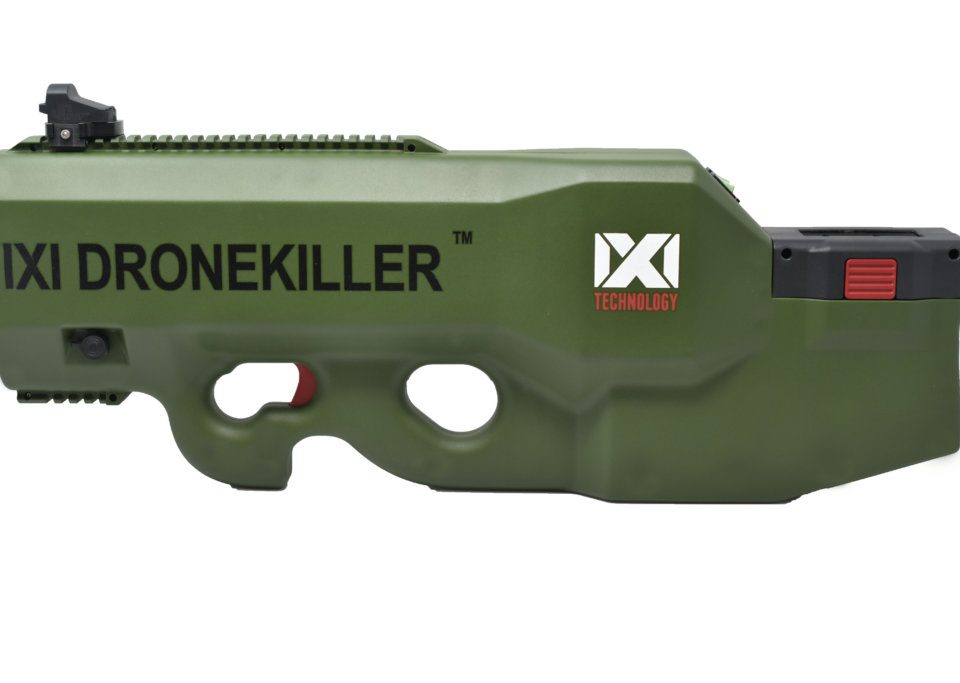
IXI EW Announces the Development of the First Counter Drone Technology Onto the T-Worx IRail
April 20, 2018
This local startup is changing how the military uses weapons. It’s almost ready for an exit.
January 23, 2019Appeared first on Forbes
The American soldiers working in hotspots worldwide are equipped these days with attachments for their M4s and M16s, with everything from range finders to aim lasers to night vision scopes. The problem: They are all battery powered.
“To make them all work, soldiers were carrying 10-15 pounds of batteries for a 30-day mission,” said Don Mclaughlin, president of T-Worx.
Mclaughlin’s 10-year project to solve that problem for the Army is turning into a company, T-Worx. It is entering a market the company estimates at more than $500M, as the Army moves quickly to replace hundreds of thousands of machine guns and carbines and develop accessories for them. The Army’s new push is also likely to kick off a wave of innovation in guns, and other new companies, like T-Worx, to serve as suppliers.
It Started With Research
Back in 2008, the Army, working through its Small Business Innovation Research program, issued a call for proposals for technology to solve the battery problem. McLaughlin submitted a proposal for a $150,000 feasibility study. Eventually, over the next five years and with the help of more funding from the Army and angel investments, he came up with a product called I-Rail, which provides unified power source for apps and accessories, and a method for communicating from a soldier’s weapon to the base or commanders.
Then, luck stepped in, otherwise known as a strategic shift from the Army, which has decided to overhaul its small arms entirely. The Army has decided to replace almost 400,000 weapons that have basically remained unchanged since the Vietnam War, according to Mclaughlin.
“Early signs show potential for massive changes,” reported the Army Times.
The weapon the Army is working on is a “significant technological advance over anything that exists today,” Army Chief of Staff Gen. Mark Milley told Todd South of the news site.
“This is a weapon that could defeat any body armor, any planned body armor that we know of in the future,” he said. “This is a weapon that can go out at ranges that are unknown today. There is a target acquisition system built into this thing that is unlike anything that exists today. This is a very sophisticated weapon.”
The new weapons, according to Mclaughlin, will shoot larger and more powerful bullets, 6.8 mm rather than 5.56 mm. “Our current weapons don’t have the killing power they need,” he said.
Five companies are developing prototypes of the new guns, according to the Army Times.
- AAI Corporation Textron Systems in Hunt Valley, Maryland.
- FN America LLC.in Columbia, South Carolina.
- General Dynamics-OTS Inc.
- PCP Tactical, LLC. in Vero Beach, Florida.
- Sig Sauer Inc. in Newington, New Hampshire.
That new initiative to replace about 85,000 light machine guns, or M16s, and 300,000 M4 carbines, means many more opportunities for T-Worx to integrate into the new weapons; and into the weapons that grow from this generation. It already has a license to produce I-Rail for Beretta guns.
The team of 12 now includes Devin Schain, executive chairman, who was also an investor in the company, and Marty Fisher, CTO, who is a former CTO of AOL. Schain said the company has more than 200 small investors, including many military leaders.
“We are making soldiers safer, and this means a lot to me, personally,” he said.
Changes in the market for military guns often filter through quickly to the civilian market. Many of the same manufacturers operate in both spaces, and advertising and the political language supporting gun rights is heavily militarized.
“It can also be leveraged for hunters and enthusiasts,” said Mclaughlin.
It will be interesting to see what happens in this case, however, as many of the changes to the military weapons could bring smart gun technology to the market. The NRA and other gun lobbying groups have fiercely resisted any kind of IT that, it says, could make guns less safe, and could be mandated into weapons. NRA observers says the key concern of the lobbying group is the potential that smart gun technology could lead to an ability by the government to track guns.
Mclaughlin’s I-Rail, and likely other products developed for the new weapons, include communications ability. For instance, he said, a commander would be able to tell how many rounds were fired, to identify the ferocity of a firefight.
When I spoke with Mclaughlin a few weeks ago, he was negotiating with the Army to include the I-Rail on more weapons. In a shareholder letter, the company said, “management intends to use this recent success as a springboard to begin optimizing the Company’s value and position it for a strategic transaction in late 2019.”
A business journalist for 20 years and a freelancer for more than 10 of that, I’ve written about tobacco farmers in Amish Country, immigrants in New York City and financiers all over the world. Right now, I’m writing about the business of guns.
Follow me on twitter at @editoremacb.


